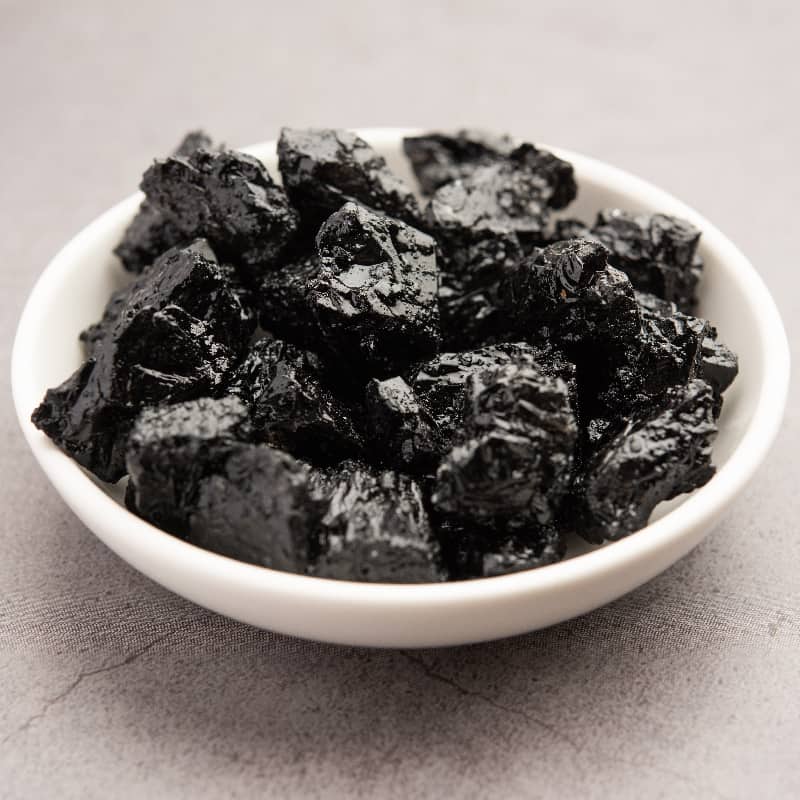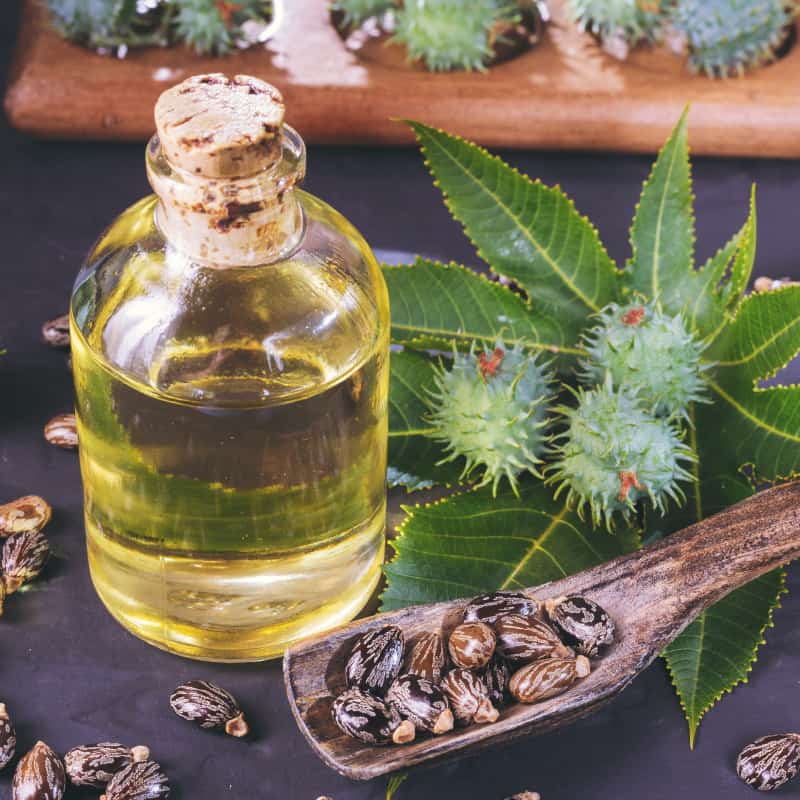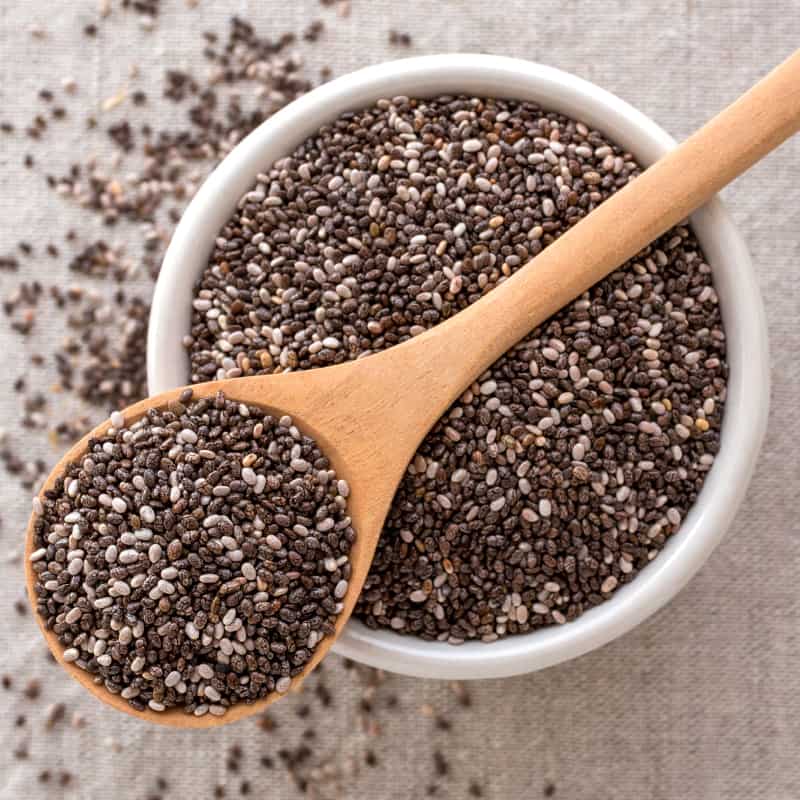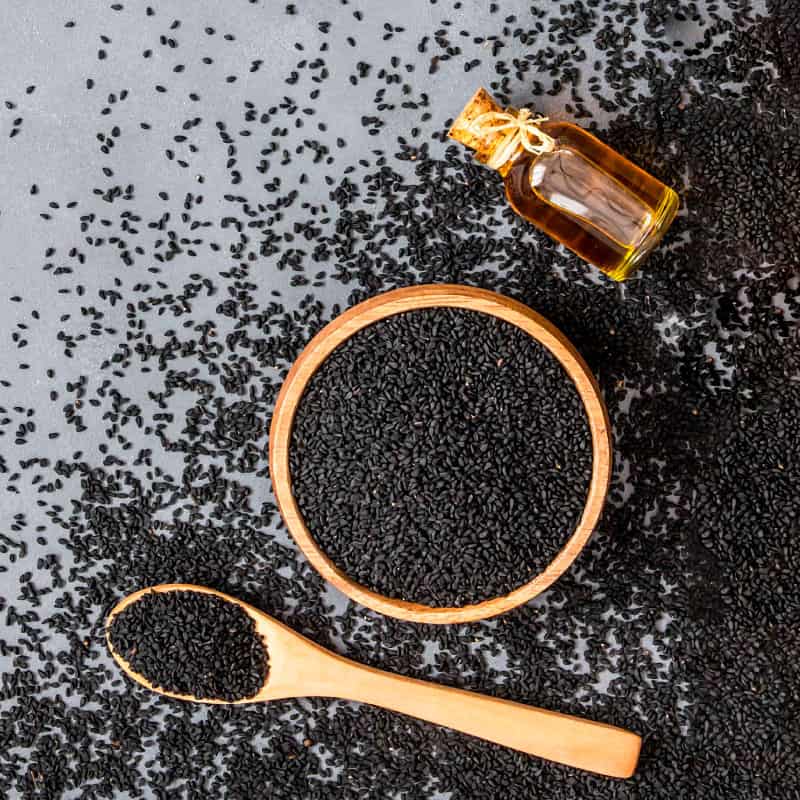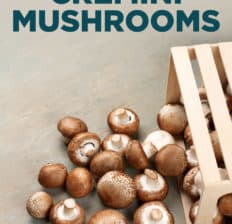This Dr. Axe content is medically reviewed or fact checked to ensure factually accurate information.
With strict editorial sourcing guidelines, we only link to academic research institutions, reputable media sites and, when research is available, medically peer-reviewed studies. Note that the numbers in parentheses (1, 2, etc.) are clickable links to these studies.
The information in our articles is NOT intended to replace a one-on-one relationship with a qualified health care professional and is not intended as medical advice.
This article is based on scientific evidence, written by experts and fact checked by our trained editorial staff. Note that the numbers in parentheses (1, 2, etc.) are clickable links to medically peer-reviewed studies.
Our team includes licensed nutritionists and dietitians, certified health education specialists, as well as certified strength and conditioning specialists, personal trainers and corrective exercise specialists. Our team aims to be not only thorough with its research, but also objective and unbiased.
The information in our articles is NOT intended to replace a one-on-one relationship with a qualified health care professional and is not intended as medical advice.
Cremini Mushrooms Benefit the Heart, Gut & Help Fight Against Cancer
November 13, 2022
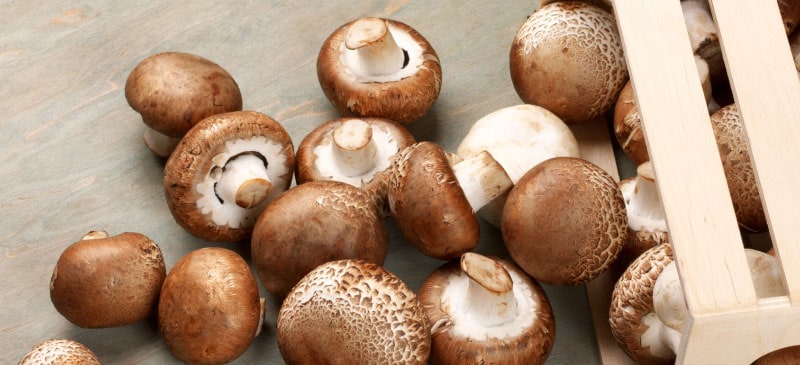
Mushrooms have been consumed for centuries as part of diets promoted in folklore and Eastern medicine practices, including Traditional Chinese Medicine. The ancient Egyptians considered mushrooms, such as cremini mushrooms, to be a food that promoted immortality and were worthy of being included in diets fed to royal leaders.
Still, to this day, mushrooms are associated with many anti-aging effects, especially due to their ability to fight cancer. Studies have found that common edible mushrooms — including button mushrooms (Agaricus bisporus), oyster mushrooms (Pleurotus ostreatus), shiitake mushrooms (Lentinus edodes) and maitake (Grifola frondosa) mushrooms — all have anticancer properties that are similar to those of medicinal/supplemental mushrooms.
This includes cremini mushrooms, and that’s that all these fungi can do.
What Are Cremini Mushrooms?
Cremini mushrooms are small- to medium-sized brown mushrooms that have an earthy, mild taste. While the difference in taste between button mushrooms and creminis is small, some people find the flavor of creminis to be richer and more appealing.
Where can you find cremini mushrooms? As more research is uncovering the many protective effects of including mushrooms in one’s diet, especially in regard to preventing chronic diseases, they’ve become easier and easier to find in most grocery stores. Keep in mind that because cremini mushrooms are the same species as button and portobello mushrooms, they might sometimes be labeled as “baby bella,” mini bella or portobellini mushrooms.
In recent years there’s a been a growing focus on including mushrooms as part of dietary approach to preventing cancer. Mushroom consumption has been found to be associated with destruction or slowed growth of cancerous cells, along with reductions in tumor size.
Certain studies have found that when cancer cells are exposed to extracts derived from mushrooms, they experience a decreased ability to form blood vessels that are needed to feed cancerous tumors, as well as reduced production of enzymes that are needed for cancerous cells to reproduce.
While most people think of exotic, “medicinal” mushrooms as the types that are capable of preventing diseases, button/cremini mushrooms have many similar benefits. Cremini mushrooms are a great source of many vitamins and trace minerals, in addition to antioxidants that help protect cells, and potassium, an electrolyte that many people don’t get enough of.
Health Benefits
What are the benefits of eating cremini mushrooms? According to a 2012 report published in the journal 3Biotech regarding mushrooms’ ability to fight disease, researchers stated, “The chief medicinal uses of mushrooms discovered so far are as anti-oxidant, anti-diabetic, hypocholesterolemic, anti-tumor, anti-cancer, immunomodulatory, anti-allergic, nephroprotective, and anti-microbial agents.”
Below are some of the most compelling reasons to include cremini/button mushrooms in your diet, based on research findings regarding unique compounds and nutrients found in mushrooms and their specific effects.
1. May Help Protect Against Cancer
Perhaps the most convincing reason to eat more mushrooms is due to their anticancer potential. Mushrooms are a cost-effective, safe way to help lower your cancer risk, as they’ve been found to promote decreased tumor cell proliferation and decreased tumor weight, while causing virtually no side effects.
One of the major active components in cremini mushrooms is conjugated linoleic acid (CLA), which has been shown to have protective effects against growth of cancerous cells.
A 2001 study published in the Journal of Nutrition that was conducted on mice found that when the mice consumed mushrooms extract, they experienced a significant reduction in growth of breast cancer cells. The study found evidence that Agaricus bisporus extract suppresses the activity of aromatase, resulting in a reduction of estrogen production.
Estrogen dominance has been identified as one major contributor to postmenopausal breast cancer in women — however, compounds, such as flavones and isoflavones, found in cremini mushrooms have been shown to help inhibit some of estrogen’s negative effects.
Other studies have found similar positive effects of mushrooms in regard to treating prostate cancer and leukemic monocyte lymphoma.
According to studies, the anticancer compounds found in various species of mushrooms, including Agaricus, play a crucial role in reducing cancer risk by decreasing reactive oxygen species, regulating cell division (mitotic kinase), regulating angiogenesis (development of blood vessels) and leading to apoptosis (destruction/death of harmful cells). There’s also evidence that consuming mushrooms can complement cancer treatments, including chemotherapy and radiation therapy, in addition to reducing common side effects of these treatments, such as nausea, bone marrow suppression, anemia and suppressed immune function.
2. Protect Cardiovascular Health and Reduce Risk for Metabolic Syndrome
Ergothioneine (EGT) is a beneficial amino acid that’s found mainly in mushrooms, making them one of the only foods sources available to us. A 2012 study in published Molecular Basis of Disease relays, “Studies have demonstrated antioxidant and cytoprotective capabilities of EGT against a wide range of cellular stressors.”
Ergothioneine has been linked to cardiovascular benefits, including reduced inflammation, protection against damaged blood vessels and healthier cholesterol levels, in addition to protection against red blood cell disorders, diabetes or liver damage. It may also help reduce swelling (inflammation) in the lungs and damage to the kidneys and brain.
3. Treat and Prevent Fatigue
Throughout history, a variety of mushrooms have been used as tonics and herbal remedies for treating fatigue, low immune function and weakness, including shiitakes, cordyceps, reishi mushrooms and, yes, even creminis. Due to their ani-inflammatory and antioxidant properties, they’re helpful for increasing immunity against common illnesses, like the cold or flu, in addition to infections.
Some research has shown that mushrooms work by increasing production of cytokines, parts of the immune system that play a role in defending the body against pathogens and many illnesses.
Mushrooms are unique for a “vegetable” (really, a fungus) in terms of their high concentration of B vitamins. B vitamins found in cremini mushrooms include niacin (vitamin B3), pantothenic acid (vitamin B5) and riboflavin (vitamin B2). Pantothenic acid(vitamin B5) plays a role in many metabolic processes, including turning fats and carbohydrates that we obtain from the foods we eat into energy. Vitamin B5 — along with other B vitamins and nutrients — is needed to fuel the brain, contributing to cognitive health and preventing fatigue.
Higher consumption of B vitamins has been linked to reductions in age-related memory loss, migraine headaches, chronic brain syndrome, depression, motion sickness and insomnia. Other benefits of niacin include balancing cholesterol and blood pressure levels, while riboflavin helps prevent anemia, treat headaches or migraines, lower PMS symptoms, and prevent diseases of the the eyes, including glaucoma.

4. Help Restore Gut Health
Due to their rich supply of antioxidants, in addition to nutrients like selenium and copper, cremini mushrooms have demonstrated protection against intestinal permeability (aka leaky gut syndrome) and reductions in inflammation and oxidative stress. Consumption of cremini mushrooms extracts have shown positive effects on conditions affecting the gastrointestinal tract, such as inflammatory bowel disease, fibrosis, ulcerative colitis and colon cancer.
Selenium is an essential trace element found in mushrooms that helps mitigate the effects of cellular oxidative stress due to how it provides selenoenzymes, selenoamino acids and selenoproteins. These protect the gut barrier and seem to play a central role in preventing oxidative injury that can wind up affecting the whole body.
5. Pack a Potassium Punch
One serving of cremini mushrooms (about one cup) provides just about 10 percent of your daily potassium, the third most abundant mineral found in the human body. Potassium is needed for numerous cellular activities and helps balance levels of other minerals, including sodium, yet low potassium is a common issue. Consuming creminis is one way to help prevent low potassium.
A diet higher in potassium has been linked to benefits including healthier blood pressure, better recovery from exercise, protection against weak bones, and reduced fatigue, muscle cramps or spasms, headaches, and brain fog.
Nutrition Facts
Cremini mushrooms are a type of fungi that have the species name Agaricus bisporus. The mushrooms are native to grassland areas throughout Europe and North America and are part of the fungus family called basidiomycete.
Some of the greatest benefits of cremini mushrooms are due to a little known amino acid called ergothioneine, which also works similarly to antioxidants. Another surprising attribute of mushrooms is that they provide a range of amino acids (often called the “building blocks of proteins”), especially the kind called glutamate.
Cremini mushrooms also contain the phytochemical CLA, which research suggests has anticancer properties, in addition to offering protection against atherosclerosis (or “hardening of the arteries”), high blood pressure, high cholesterol, diabetes and other conditions.
Only a very small number of foods actually provide any much-needed vitamin D. While mushrooms typically only contain very low amounts of vitamin D, they’re unique in their ability to produce and provide much more when exposed to sunlight.
Many adults (and children too) are deficient in vitamin D due to spending most of their time indoors, which interferes with the body’s ability to make enough on its own. When “sun mushrooms” are exposed to UV light for several hours, they may be able to provide 100 percent of the recommended daily intake of vitamin D, offering benefits for bone health, immunity, mental health and more.
One cup (72 grams) of sliced, raw cremini mushrooms contains about: (11)
- 19.4 calories
- 3 grams carbohydrates
- 1.8 grams protein
- 0.1 gram fat
- 0.4 gram fiber
- 18.7 micrograms selenium (27 percent DV)
- 0.4 milligram riboflavin (21 percent DV)
- 0.4 milligram copper (18 percent DV)
- 2.7 milligrams niacin (14 percent DV)
- 1.1 milligram pantothenic acid (11 percent DV)
- 86.4 milligrams phosphorus (9 percent DV)
- 323 milligrams potassium (9 percent DV)
- 0.1 milligram thiamine (5 percent DV)
- 0.8 milligram zinc (5 percent DV)
- 0.1 milligram manganese (5 percent DV)
- 0.1 milligram vitamin B6 (4 percent DV)
- 10.1 micrograms folate (3 percent DV)
Cremini Mushrooms vs. Other Mushrooms
Cremini mushrooms have more in common with other familiar mushrooms, like white button or portobellos, than you might think. All of these mushroom varieties actually belong to the same species of fungus, called Agaricus bisporus.
What makes these mushrooms taste and look a bit different than one another is mostly their stage of maturity, which affects their size, color and often even their price. In many nations today, white button mushrooms are the best-selling type and often the easiest to find too.
All types of edible mushrooms are consumed by the hundreds of millions of pounds every year. In the United States alone, every year more than 940 million pounds of mushrooms are bought in grocery stores, farmers markets and health food stores.
Are all of these mushrooms equally good for you? In many ways, yes, they are.
When cooking with creminis or other related mushrooms, you’ll benefit from obtaining lots of B vitamins, phosphorus, selenium, copper, and even some fiber and protein too. Mushrooms are very low in fat and calories, in addition to both sugar and carbs. Yet mushrooms of all kinds pack a big punch when it comes to helping to prevent free radical damage, problems with bone loss, and potentially weight gain or various types of cancer.
In fact, mushrooms are associated with so many health-promoting effects that they’ve even earned their own research journal: the International Journal of Medicinal Mushrooms.
Here is more on how cremini mushrooms stack up vs. other varieties:
- Mushrooms are all species of fungi, which we eat more often than you’d think. Not only do we eat beneficial fungi when consuming disease-fighting mushrooms, but we also obtain some from eating cheese, drinking wine and even from certain types of traditionally prepared breads.
- Mushrooms contain many bioactive compounds, which include polysaccharides, proteins (amino acids), enzymes, small amounts of healthy fats, glycosides, alkaloids, volatile oils, and antioxidants like tocopherols, phenolics, flavonoids and carotenoids.
- Portobello mushrooms are the mature version of cremini mushrooms. Portobellos are harvested when they’re fully grown, while creminis are picked earlier before their “caps” grow very big.
- Both cremini and portobello mushrooms have a darker brown color than white button mushrooms. Both have a round shape, smooth cap and deeper, savory flavor compared to button mushrooms, according to many cooks.
- Shiitake mushrooms have a long history of use of Traditional Chinese Medicine, especially for treating infections and fatigue. They have a smokier taste than cremini mushrooms and make a great addition to stir-fries, soups or risotto, especially when combined with other anti-inflammatory foods like garlic and onions.
- While you wouldn’t use them to cook with, medicinal mushrooms, such as cordyceps or reishi mushrooms, have dozens of well-researched benefits. Medicinal mushrooms are taken in supplement or extract form and have strong adaptogen qualities, meaning they help support the nervous system and boost the body’s ability to cope with stress, fatigue or illness. Studies have found that mushrooms like cordyceps and reishi have strong antioxidant and anti-inflammatry abilities that help prevent conditions like respiratory infections, cancer, cognitive disorders, autoimmune disorders, liver and kidney disease, chronic fatigue, hepatitis, and more.
- Another type of mushroom you may come across in the supermarket is maitake mushrooms. These contain a special polysaccharide components called beta-1,6 glucan, which supports a strong immune system and may help prevent viruses, infections or complications due to diabetes. In supplement form, maitake mushroom is used to treat side effects of cancer, hepatitis, chronic fatigue, high blood pressure, PCOS and many other ailments.
- Oyster mushrooms, which usually have gray-blue or light yellow caps, are another variety that may be pricier and harder to find, but they have many uses, including when cooking. Oyster mushrooms supply lots of B vitamins and iron, so they are beneficial for treating anemia and symptoms due to autoimmune disorders, such as joint pain or low energy. They also contain a molecule called lovastatin, which is useful for treating high cholesterol.
How to Use and Cook (Plus Recipes)
Look for cremini mushrooms that appear to be firm, solid, free from tears, and not shriveled or slippery looking.
To clean mushrooms, it’s best not to rinse them in too much water or soak them due to how they absorb a high amount of liquid and can become slippery. Instead remove any residue from the surface of mushrooms using a damp cloth, rag or strong paper towel. Gently rub the mushrooms to clean them up, being careful not to rub too hard as this can cause them to start breaking.
Once you’re done cleaning the mushrooms, pat them with a dry cloth or paper towel to let them dry — this way they don’t become overly soggy when you cook or prepare them.
In situations where you’re unable to find creminis, try substituting white button mushrooms or chopped portobellos instead. Because portobellos are a bit larger and firmer, most people prefer to use them when making grilled mushroom veggie burgers or stuffed mushrooms.
Cremini mushrooms still give you the savory flavor you’re looking for but are a better choice when using them sliced up in sauces, on salads, or in omelets, stir-fries or casseroles. Cremini mushrooms (and related varieties) pair well with other ingredients like:
- onion
- garlic
- feta or goat cheese
- basil
- parsley
- red pepper flakes
- garlic
- tomatoes
- soy sauce
- butter
- stock
- risotto
- rice
- barley
- bulgur
- other whole grains
Cremini Mushroom Recipe Ideas
Here are several recipe ideas using cremini mushrooms:
- Florentine Omelette with Mushrooms Recipe
- Stuffed Mushrooms Recipe
- Pecorino Chicken & Mushrooms Recipe
- Mushroom Soup Recipe
Risks and Side Effects
Cremini mushrooms are unlikely to cause an allergy, but if you have an allergy to another type of mushroom it’s best to avoid creminis and use caution. Mushrooms contain purines that are linked to health problems in some cases due to how they form uric acid, which can accumulate and lead to conditions like gout or kidney stones.
Speak to a doctor about whether mushrooms might worsen your symptoms if you struggle with one of these conditions.
Final Thoughts
- Cremini mushrooms are brown, small to medium-sized mushrooms that are related to portobellos and white button mushrooms.
- Benefits of cremini mushrooms include reducing inflammation; helping prevent cancer or heart disease; supplying high levels of B vitamins, antioxidants and phytonutrients, like CLA and L-ergothioneine; and providing selenium, copper, potassium, phosphorus and B vitamins.
- There are a variety of ways to use them, including in sauces, on salads, or in omelets, stir-fries or casseroles.



